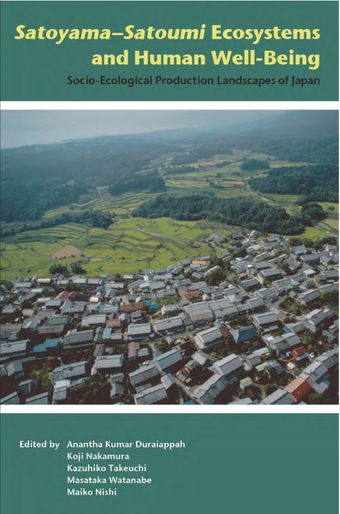Tohoku cluster

- Authors: Takaaki Koganezawa and Tohru Nakashizuka
- Main Title: Satoyama-Satoumi Ecosystems and Human Well-Being , pp 282-306
- Publication Date: April 2013
- DOI: https://doi.org/10.18356/dcc4c98a-en
- Language: English
The Tohoku region has a long history of utilizing the natural environment at the peripheries of residential areas – called satoyama – as ecosystem services. In forested regions, forests that lie on the outskirts of residential areas have been utilized as satoyama through the provisioning of timber. The lumbered timber was used as a valuable source of fuel in the form of firewood and charcoal for about 400 years before being replaced by fossil fuels. Similarly, the fallen leaves from woodlands have been used as compost and fertilizer for paddy fields and dry fields. In upstream rivers and areas that line the wetland valleys, cisterns have been created that have supported the expansion of paddy field agriculture. In hilly and highland areas, much woodland has been used as pastures, and areas of livestock husbandry such as horse production have spread. On the slopes of the hilly terrain in the southern Tohoku, mulberry plantations were cultivated to support the sericulture which was the main industrial activity in the region until World War II. The forest regions of Tohoku were utilized as sources of fuel, forestry and agriculture (products from agriculture and livestock), fertilizer and water under the comprehensive management of the natural environment, called satoyama. Similarly, on the flatlands, through the process of developing wetlands and floodplains into new rice paddies, artificial forests were created which were used as a source of windbreak for residential areas, water conservation, fuel and materials required for living, and the method of managing the natural environment known as “igune” or “egune” was created. This method of enjoying the ecosystem services from satoyama while managing the natural environment was carried out in all parts of Tohoku until World War II. However, post-war industrialization and the declining status of forestry and agriculture together with the further decline in population within these areas caused a decline in satoyama areas. Much of the land under the satoyama management was converted to residential areas and golfcourses. Moreover, agricultural methods changed with an increased focus on the use of chemical fertilizers, creation of irrigation channels and introduction of agricultural machinery at the expense of satoyama landscape management techniques. The result of these transitions were the abandonment of arable land, decline in ecosystem services and deterioration of water quality.
© United Nations
ISBN (PDF):
9789210552905
Book DOI:
https://doi.org/10.18356/5d7e4936-en
Related Subject(s):
Environment and Climate Change
Sustainable Development Goals:
Countries:
Japan
-
From This Site
/content/books/9789210552905c010dcterms_title,dcterms_subject,pub_keyword-contentType:Journal -contentType:Contributor -contentType:Concept -contentType:Institution105
/content/books/9789210552905c010
dcterms_title,dcterms_subject,pub_keyword
-contentType:Journal -contentType:Contributor -contentType:Concept -contentType:Institution
10
5


